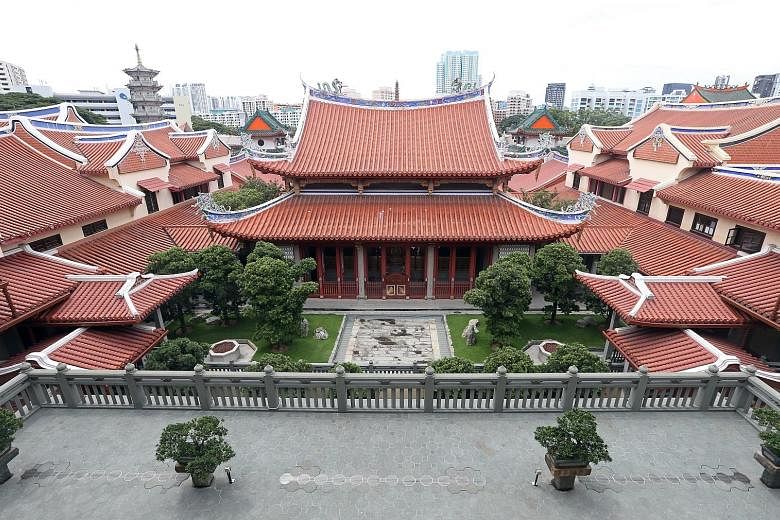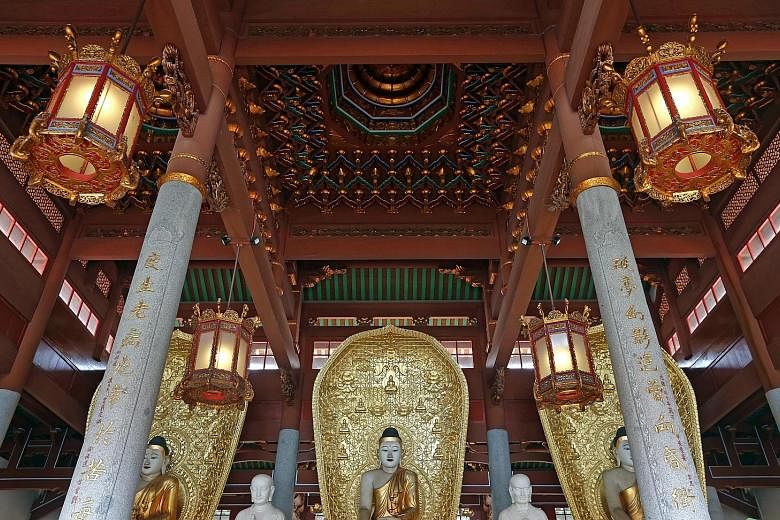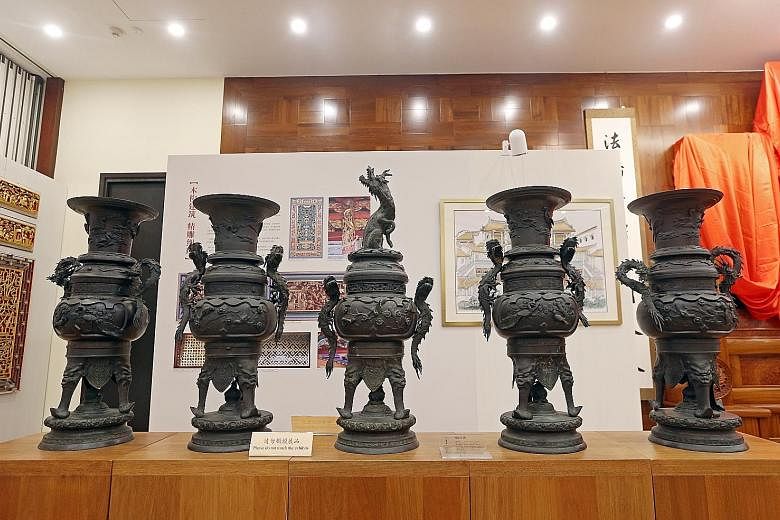Tucked away in Kim Keat is a tranquil and secluded temple complex straight out of a Chinese period drama.
The Lian Shan Shuang Lin Monastery was completed in the 1900s but, despite its beauty and longevity, is hardly known to the general public. It is largely obscured by flats encircling the compound and the Pan-Island Expressway which runs in front of it.
The monastery's Mahavira Hall and the Hall of Celestial Kings were gazetted as national monuments in 1980. Singapore's oldest Buddhist monastery once owned 20ha of land that stretched all the way to Balestier. It is now a tenth of its original size after parts of the space were acquired for public housing and transport infrastructure.
The custodians pledged to restore and rebuild the rest of the crumbling compound - home to about 30 halls and buildings reflecting three distinct Hokkien architectural styles.
This was encapsulated in a masterplan that was submitted to the Urban Redevelopment Authority in the 1990s.
The abbot, Venerable Wai Yim, who started out as a monk there and later spent years leading the restoration effort, said: "The responsibility lies with our generation to preserve these historic structures using more lasting materials and technology available to us today.
"We're consoled and relieved that we are progressing well towards achieving this goal."
The monastery has just completed phase two of its masterplan which involved replacing a modern building with a replica of its original 1903 Dharma Hall. The original hall was torn down after it was deemed structurally unsafe in the 1970s.
The newly reconstructed two-storey Dharma Hall will be opened by Prime Minister Lee Hsien Loong tomorrow.
The community-funded project cost $20 million and the hall is where the temple's 12 monks will impart Buddhist doctrines to devotees. Among its features: wood and gold leaf carvings on its timber doors which depict Chinese folklore and paragons of filial piety.
An exhibition, in conjunction with the hall's opening, will be held there till February.
It features some of the temple's 100-year-old artefacts, such as its incense, candle and flower holders adorned with decorative sculptures of dragons.
Next on the temple's agenda: to restore and rebuild its 1907 bell and drum towers in a project that is expected to cost at least $5 million and likely to start next year.
Venerable Wai Yim, who has been involved in the decades-long preservation efforts, hopes the issue of accessibility will be improved by the authorities.
At present, the monastery is mainly frequented by older devotees and tourists. The abbot said tourists are often effusive with their compliments, likening the place to a historic treasure.
However, the monastery hardly registers on the radar of most Singaporeans who might choose instead to seek out temple architecture while holidaying in Asia.
Venerable Wai Yim believes this is a waste for the temple is a repository of Chinese culture and artefacts and there is something to learn at every corner.
He said: "The Caucasian tourists appreciate the monastery's beauty. They walk about the compound and they think about the history and its origins. They understand the work that goes into maintaining the place.
"We encourage everyone to make a visit to the space. We have many rich stories on Chinese culture, that go beyond Buddhism, to tell."




